From the Toronto Star
You are currently browsing the archive for the government category.
- Toronto Sun: Census plan continues to dog Harper
- David Akin On the Hill: MPs get letters: Conservative supporter ready to quit over census decision
- Globe and Mail: Canada’s stat crunchers join census fight ‘The world, in fact, has spoken on this issue,’ says Statistical Society of Canada
- Winnipeg Free Press: How Harper cut the census strings, then got tangled in them
- The Hill Times: Census controversy affecting StatsCan morale in ‘major way’ Ivan Fellegi says the federal agency is in crisis.
- The Hill Times: Feds to spend $25-million to protect integrity of short census, to clear confusion Some $25-million of $30-million on advertising to be spent on short census follow-up.
- Winnipeg Free Press: Premiers meet to discuss recovering economy, water protection and census
- The Vanity Press: Don’t Wanna Be a Canadian Idiot
- Nova News Now – The Register – AGAR ADAMSON: Taking the long road
- The Mark: The Harper government has found a way to revise the census and remake Canada’s public service at the same time.
- Rabble.ca: Protecting our civil liberties (or securing us within the privacy of our home)
- The Hill Times: Can the provinces fix the census fiasco?
Once again, Stephen Harper has charted a course for the nation that drops the ball in the provinces’ and territories’ lap. - Edmonton Sun: Stelmach says surveys are valuable
- Troy Media Corporation: Personal privacy issue triggers Census uproar
- CBC news: Census move hurts Toronto planning: official’We’re operating in an entire fog here’
- Winnipeg Free Press: Alberta cities say census change doesn’t add up
- Axcess News: Statistics Canada brews political fight over census
- Planetizen: Canadian Urbanists weigh in on Census Controversy
- CBC news: Ottawa councillors denounce census change
- National Post: George Jonas: Drop the census charade
- Leader Post: Canada’s big crisis: filling out forms
- Toronto Star: Voluntary census ‘intrinsically biased’
- The Montreal Gazette: A failure to communicate Communications is not rocket science, but the Harper government just doesn’t seem to get it
- Le droit: Recensement: le temps presse pour les détracteurs du questionnaire volontaire
- Telegraph Journal: Why the census matters
- Cyberpress: Recensement: le nouveau questionnaire évacue le travail non rémunéré
- Cyberpresse: Ah!, les statistiques!
- Cyberpresse: Trou de mémoire inacceptable
 Via: BI Professional
Via: BI Professional
An introduction for my many international followers:
King: Canadian Prime Minister Stephen Harper
Page: Canadian Industry Minister Tony Clement
Statistician: Recently resigned head of Statistics Canada, Munir SheikhSpecial thanks to data quality expert Jim Harris whose Dr. Seuss-style data quality limmericks and songs served as a partial inspiration to this piece. His blog can be found on my Blogroll (Obsessive Compulsive Data Quality).
Enjoy!
Good King Censusless looked out
On the cottage season.
With the sunshine round about
Warm and crisp and even.
Everyone was drinking beer
Feeling great elation.
How could he disrupt the cheer
breaking cross the nation?“Mr Clement, come by strife,
If you know so, say it.
How can I make foul the life
Of the summer respite?”
“Sire, a man I once knew long
Loathed the census taking
If you could remove this wrong
You’d be nation-making.”“Make it so”, he said at once
With no consultation,
“Though I may be thought a dunce
Causing consternation.”
Statistician would not toast
His part in this madness.
He would rather quit his post
Causing him much sadness.Harper bellowed “What a fool!
Get that man to focus!
He should know that math’s not cool,
Stats are hocus pocus.”
Statistician stood his ground
In the public’s favour.
He said he was honour-bound;
People saw him braver.“Bring me hatchets, bring me fire,
We shall burn his cabin!
He’s earned my unholy ire!
He won’t know what happened!”
Page and Monarch, off they trode,
Off they trode together
Feeling stormy, yet instead
Of the sunny weather.Statistician’s cabin burned
To the ground next morning.
Page and Monarch never learned,
Though this be a warning:
Cabin dwellers all be sure
Be you all accounted,
Those who cannot count the poor
Can’t themselves be counted.
I received tips about other canceled or cuts to government surveys. I am checking to see what else might be missing in this list. Looks like there are MORE serious cut-backs to knowledge in Canada. Also READ the comments to this post, they are loaded with great information. Armine Yalnizyan adds the following:
” “cut” can mean different things, from discontinued, to throttled in terms of sample size, to lost questions (census/NHS), to just delaying it indefinitely.” (email communication)
NEW INFO IN this Datalibre post (05/08/2010)
The Digital Journal article Cancellation of Youth In Transition Survey Shortsighted includes the following:
- Youth In Transition Survey (YITS)
- National Longitudinal Survey on Children and Youth (NLSCY)
- National Apprenticeship Survey (NAS)
- Program for International Student Assessment (PISA)
These were carried out jointly between Human Resources and Skills Development Canada and Statistics Canada.
According to The Tyee and a few others, this one has been cancelled. However, other information says “CP story about Public Service Employee Survey wrong: Treasury Board. Survey still a go; a proposed annual survey spiked.” (need to verify!):
5. Public Sector Employment Survey (PSES)
While the Globe and Mail; Social Policy in Ontario, NJN Networks and the Council of Canadians with Disabilities report that the following was scrapped by HRSDC.
6. Participation and Activity Limitation Survey (PALS)
Armine Yalnizyan, in her open letter to Tony Clement published in the Progressive Economics Forum includes references to the following survey cuts and cancellations. I also received some email communication about these:
7. Workplace and Employee Survey (WES)
“WES was discontinued in 2009. It told us about benefits related to working, I think the only annual source of info on healthcare and pension benefits, but could be wrong”. (I will verify this later)
8.Survey of Household Spending
“was designed to inform us of spending patterns of Canadian households. It is about to change its methodology to save costs. Because of these changes we will no longer know what is happening to the savings rates and debt levels of rich, poor and middle class families”. email communication: “SHS is undergoing a methodological change that will see it provide less detailed (i.e. distributional) info. Aggregate info (average, mean) will still be just as robust but we will know less about how different are rich and poor households’ patterns of saving, dis-saving (going through savings and borrowing) and spending on things like housing, healthcare, energy, education as a % of their incomes.”
9. Survey of Financial Security
“tracks the distribution of assets and debts across income groups, age groups, family types, and regions in Canada, something virtually all advanced industrialized nations do on a regular basis. It was last undertaken by Statistics Canada in 2005. There are no plans to run it again. It has been deemed an unnecessary survey.” email communication “last run in 2005, assesses net worth (assets minus debt) and what contributes to it, like value of house, value of RRSP,RPP student debt, mortgage debt, etc. It is an occasional survey but clearly something of interest these days. Last time it was run was because HRSDC financed it because of tight budgets at StatCAn (no $ for occasionals). The sample size was 9,000 instead of the 23,000 the previous time (1999), and while results were robust enough to be published at the national level by decile, it was no longer possible to order data to assess changes for young versus older families with children or immigrant families. “
It seems like the Survey of Financial Security,according to StatCan is”
is budget or sponsor dependent, the status is occasional and not cancelled.”
A colleague who works with municipal scale data sent the following:
10. Longitudinal Survey of Immigrants to Canada (LSIC).
This may have been a planned conclusion to this survey. But, then, that’s one thing that is so vexing about this situation: The absence of any transparent attempt at “planning” for changes to our survey instruments and methodologies.
One other thing to note about the list of canceled surveys: None of these is relevant to organizations seeking to measure trends or conditions at the scale of either municipalities or neighbourhoods. The closest would be the SHS, which captured some trends for “selected CMAs”. We need MORE information about municipalities and their neighbourhoods, not less!!! (Email communication)
I need to check on this new information which was posted in the Comments of Armine’s open letter:
?Transportation data? “transportation in Canada, many data series have been discontinued over the last couple of decades -these are data on the “supply side” of transportation, which is a sink for quite large infrastructure expenditures which need to be “got right” a priori”
The following need to be validated. Has anyone heard of these or any others that have been canceled?
?Survey of Financial Security?
?Workplace and Employee Survey (WES)?
?Survey of Household Spending?
 Remind me to not go away during a censusless time! Shesh catching is brutal. But alas, I think I may have captured most of the media clips in the last few days. There are quite a few, so get some tea and cookies!
Remind me to not go away during a censusless time! Shesh catching is brutal. But alas, I think I may have captured most of the media clips in the last few days. There are quite a few, so get some tea and cookies!
- The Progressive Economics Forum: Can the provinces fix the Census Fiasco?
- The Progressive Economics Forum: An Exit Strategy for the Conservatives
- Warren Kinsella: Census senselessness: from today’s Hill Times
- Toronto Star: McQuaig: Making it easier to ignore the poor
- Peninsula News Review: Cutting census is some nonsense
- Rabble.ca: Fraser Institute supports scrapping long-form census
- VicNews: OUR VIEW: Census data is valuable
- Saanich News: Essential details
- Gold Stream Gazette: Long and short, census is valuable
Oak Bay News: EDITORIAL: Census data valuable - Globe and Mail: Premiers seek difficult census compromise
Ontario Premier Dalton McGuinty and Quebec’s Jean Charest preside over a special joint cabinet meeting on June 16, 2010 at the Quebec National Assembly. - Winnipeg Free Press: Roman Catholic bishops ask Tories to back off on planned census change
- Cyberpresse: Le Barreau canadien souhaite le maintien du formulaire long
- Mcleans: How the census went from a quinquennial chore to a national crisis
- Globe and Mail: Economists decry census move
- le Devoir: Formulaire long du recensement – Claude Béchard veut que Stephen Harper revienne sur sa décision Le premier ministre est «manquant» dans ce «fiasco», selon Jack Layton
- Globe and Mail: The incredible shrinking Tory tent
- CBC news: Layton calls for census compromise
- Montreal Gazette: No consensus on census debate: Poll
- Montreal Gazette: Statistics council suggests compromise to end census battle
- Globe and Mail: Spector Vision Norman Spector blogs on politics, government and the mass media.
- Globe and Mail: Time running out on census compromise Statistics Canada says new questionnaire set to go to print August 9
- Winnipeg Free Press: Roman Catholic bishops ask Tories to back off on planned census change
- Calgary Herald: Changes to census may harm records
- Globe and Mail: Number-crunchers’ Vancouver convention set to hail Statscan’s ex-chief Former Statistics Canada chief Munir Sheikh waits for the start of testimony at a Commons industry committee hearing into changes to the census on July 27, 2010. Reuters Peers express admiration for Munir Sheikh’s stand on census controversy
- Thompson Citizen: Ideology again trumps commonsense in Conservative long-form census foolishness
- 680 News All News Radio: Industry Minister and former Stats czar among witnesses at Commons committee
- JewishGen: More on Canadian Government Abondoning the Long Census Form
- Telegraph Journal: Clamour over census wakes a sleeping nation
- Toronto Star: Time almost up for census compromise
- Burnaby Now: Burnaby group blasts changes to census
- Telegraph Journal: why the Census Matters
- Montreal Gazette: Political price for changing census
- The Winkler Times: Census 2011: Count yourself in Accurate numbers mean big bucks for city
- Statistical Society of Canada Statement on the Long Form Census, INDU Committee
- Yahoo News: Census on the Podium at the Joint Statistical Meetings in Vancouver
- Federation of Post-Secondary Educators of BC Canada’s Census Debate: The Long and Short of It
- The Pen Machine: The new census plan is a disservice to all Canadians
- Progressive Economics Forum: Calgary Stampede – Census related, of course
- Calgary Herald: Consensus on the census
- Progressive Economics Forum: Census, homelessness and gated communities
- Toronto Star: Who Are you?
- Progressive Economics Forum: Privacy and the Census: It’s Really Not All About You
- Toronto Star: Voluntary census ‘intrinsically biased’
- Le Devoir: Consensus persistant
- Le Devoir: 2014: le chaos
- Le Droit: Recensement: le temps presse pour les détracteurs du questionnaire volontaire
- Toronto Star: Who are you? The census helps demographers know
A demographic tool defines all of us by our postal codes, via core data from the imperiled long-form census - The Tyee: Why Attack the Long Census? Check off another box on the Fraser Institute’s libertarian to-do list
- CBC The National: The Mounties, and Counting Canadians Part 1: Part 2:
- Ottawa Citizen: Blame government, not stats chief, for this mess
- Western Standard: Bullshit, and the Ironic Invalidity of the Census Debate
- Ottawa Citizen: Top science journal attacks Conservatives’ census plans
- Weekly MP Report from Jay Hill: “There is (Con) Census”
- New Democrats online: An Exit Strategy for the Conservatives
- Producer.com: Census changes spurred by politics, say critics
- The Spec: Multimedia module on the Census
- Canadian Business Online: The CEO Poll: No census consensus
- Miner & News: Census dispute raises the question: Do we even need one anymore?
- CPAC: The NDP leader speaks about the long-form census controversy and takes questions from journalists.
- Northern Life: Scrapping of mandatory long-form census an ‘ideological decision’
- Edmonton Sun: Stelmach says surveys are valuable
- Winnipeg Free Press: Committee calls for census documents Government given 5 days to produce emails, other papers
- Straight Talk: SFU statistician and economist criticize decision to scrap census long form
- 24 hours: Long-form census controversy to take over convention centre
- Ottawa Citizen: Why you can trust the census, but not polls
- Star Phoenix: Long-form census data key for schools: official
- Globe and Mail: Toronto mayoral candidates weigh in on fate of long-form census Ford spokeswoman references Trudeau quip: ‘The federal government has no place in the bedrooms of the nation’
- CBC News: Illuminating the enumerating
- Globe and Mail: Census call is part of data-collection trend We should think seriously before making changes that will affect governments’ capacity to deliver good public policy
- Nunatsiaq online: ITK dumps on Ottawa over census changes Sheutiapik says Inuit need long-form data
- CBC news: Where’s Harper? Where’s Ignatieff? Where are my car keys?
- The Province: Preventing exposure
- Macleans: Scott Reid Maverick Watch
- Western Standard: Filibuster on the Census
- North Shore News: Tory census choice recalls comic opera
- National Post: Full Pundit Opinion Polls are generally trash
- Straight Goods: Stephen Harper is polishing his resumé for future work PM playing to future employers, likely American, not his base.
- Embassy: The black marks are adding up
- Barry’s Bay This Week: A baffling decision on so many levels
- Standard Freeholder: Why democracy still matters
- Winnipeg Free Press: Have Your Say
- Leader Post: MANDRYK: Sask. Premier Brad Wall is slipping on issues of trust
- The Calgary Beacon: MAKING IT EASIER TO IGNORE THE POOR
- The North Bay Nugget: Tories “put ideology before facts” in census decision, Rota says
- Chronicle Telegraph: Elimination of census long form prompts QCGN complaint
- Hill Times: Opposition strategists say mandatory long-form census data ‘vital’ They need the data to build demographic profiles of voters they hope to target.
- Radio Canada: (Video) 24/60
- Times Colonist: Stubborn stance on census foolish
- Ottawa Citizen: Harper fosters public dialogue
- National Post: Barbara Kay on Statistics Canada: Seek disgruntlement and ye shall find
- CBC: Orders of the Day: It may not have the alliterative ring of “Where’s Waldo?”
- Cyberpresse: Recensement: une manifestation aura lieu mardi à Ottawa
- Post Media News: Tories agree to release documents on census decision
- Radio Canada: Le ministre Clement persiste et signe
- Toronto Star: PM told to ‘rethink’ census McGuinty joins others urging Harper to change decision to make mandatory long form voluntary
- Cyberpresse: L’écart se resserre entre libéraux et conservateurs
- CBC: What about ‘intrusive’ census answers?
- Canada.com: Tories agree to release documents on census decision
- Canadian Press: Census cynicism? Worries raised over response rates for 2011 census and survey
- Cyberpresse: Crise du recensement
- Cyberpresse: Recensement: Munir Sheikh explique sa démission
It is for the 2010 US Census, however the substance of the song is the same for us!
- National Post: Numbers are in: Tories out of touch
- Liberals: Censuslessness
- Macleans: The Drowning of Tony Clement’s Credibility
- Toronto Star: Bias triumphs in census row
- Sister Sage’s Musings: Oh My! Steve Now Alienates Businesses With His Decision To Cut the Census–Who Exactly Benefits From Steve’s Relentlessness?
- Globe and Mail: Voluntary census deletes questions about unpaid work – it is not a census it is a survey!
- Metro: Census objectors come in all forms
- Globe and Mail: Premiers seek difficult compromise on census
Ontario Premier Dalton McGuinty and Quebec’s Jean Charest preside over a special joint cabinet meeting on June 16, 2010 at the Quebec National Assembly. - Ontario Premier Dalton McGuinty and Quebec’s Jean Charest preside over a special joint cabinet meeting on June 16, 2010 at the Quebec National Assembly. THE CANADIAN PRESS
- Globe and Mail: Quebec joins Ontario in calling for Ottawa to reverse its stand, but McGuinty acknowledges it won’t be easy
- NDP: NDP Harper’s Census games – putting your Health Care at risk
- Globe and Mail: The reviews are in – and they are not kind to Tony Clement
- Globe and Mail: Survey says: Government still not listening on census
Industry Minister Tony Clement appears at a House of Commons industry committee hearing looking at changes to the long-form census on Tuesday. - Globe and Mail: Industry Minister Tony Clement appears at a House of Commons industry committee hearing looking at changes to the long-form census on Tuesday. Clement obdurate in testimony before Commons committee
- National Post: John Ivison: Conservatives have a knack for picking small hills to die on
- Nature International Weekly: Save the census
 Yesterday’s CPAC watching, and that thing called a job, means that I got a bit behind on my Census media round-ups. Mia culpa!
Yesterday’s CPAC watching, and that thing called a job, means that I got a bit behind on my Census media round-ups. Mia culpa!
Also, you will have noted that I post the articles as I find them, meaning they are not in any kind of chronological order or in any order of importance. I may have missed one or two, and maybe a link is off. If that is the case, just let me know and I will add and fix. Also, I am finding it hard to keep up. I must say reading the #census twitter feeds every morning is making me cross eyed! Bref! Please send stuff to help me keep the list up to date!
enjoy this loooooooog list.
3 important resources:
- Great francophone media Reviews & Roundups: pabsta aka Pier-Andre Bouchard St-Amant. He also maintains a fabulous list of ceux qui Appuis au questionnaire long obligatoire
- Another great insiders source: Canadian Association of Public Data Users (CAPDU)
- Canadian Council on Social Development (CCSD): Long Form Census Tool Kit
Les manchettes / les clips:
- Nature Editorial: Save the census
- Globe and Mail: Race is on to find compromise on census
- The Ottawa Citizen: I hope MPs can end census hostage-taking
- Cyberpresse: Crise du recensement
- Agence Science-Presse: Vie privée et recensement
- Radio Canada: Le ministre Clement devra s’expliquer
- CBC news: Fredericton mayor criticizes census changes
- Parti Quebecois Statement: Abolition par le gouvernement conservateur du questionnaire détaillé pour le recensement : que fait le gouvernement Charest pour s’opposer à cette décision?
- Canada.com: Tories agree to release documents on census decision
- Canadian Press: Minister sticking to census decision
- Le Devoir: Recensement: un sondage volontaire ne fonctionnera pas, selon l’ancien dirigeant de Statistique Canada
- Morton’s Musings: 5 days to disclose census documents
- CBC: Clement to face MPs on census
- The Tribune: Clement, opposition face off on census
- Andrew Smith’s Blog: The Census Flap illustrates that history professors are useful to society
- Globe and Mail: Business concerned over census changes Entrepreneurs, economists rely heavily on data from the long-form census, and most can’t afford the alternatives
- Embassy: Census change will hurt immigrants: Experts
- Globe and Mail: Census call is part of data-collection trend We should think seriously before making changes that will affect governments’ capacity to deliver good public policy
- itWorld: No mandatory census means no data quality
- My Canada: Integrity and Leadership: Munir Sheikh
- Macleans: The Commons: Verifiable data are no match for riddles and notions
- Ralph Goodale Speech on the Census
- This Magazine: Margin of Error #5: Don’t just preserve the long-form census. Set its data free
- Times Colonist: Census lets government serve us better
- The Star Phoenix: Long-form census data key for schools
- Simcoe.com
- Edmonton Sun: Stelmach says surveys are valuable
- Impolitical: Official languages census concession
- The Mark: A Census For Our Times
- The Peterborough Examiner: Pellizzari speaks out about long-form census Medical officer of health sends letter to politicians
- Winnipeg Press: Census compromise? Minister, opposition consider options
- Cyberpresse: L’écart se resserre entre libéraux et conservateurs
- Le Soleil: Mode de recensement: un débat mondial
- Moregen Peers: TonyClement_MP, what’s the big idea?
- Vancouver Sun: StatsCan in turmoil over decision to scrap long-form census
- Vancouver Sun: Crucial information will be lost with census change, experts warn Former StatsCan head speaks for first time Parliamentary Bureau
- le Devoir: Le recensement sera volontaire, point Le ministre Tony Clement refuse de faire marche arrière, mais il se dit néanmoins ouvert à évaluer les options qui vont dans le sens de sa réforme
- CTV News: StatsCan’s reputation damaged, former boss testifies
- Vancouver Sun: National economic and social data depend on long-form survey
- Vancouver Sun: Census change could make everything StatsCan does suspect: B.C. experts: Everything from inflation to unemployment rates rely on census data
- Globe and Mail: Long or short, Tories must retreat on the census
- Law is Cool: The Canadian census debate—a background
- Niagara this week: Reverse decision on 2011 Census
- Flying Flux: When Politicians Play Scientist
- rabble.ca: The anti-information information society, brought to you by the anti-government government
- David Akin – On the Hill: His own words: StatsCan chief resigns over census flap
- Miskatonic University Press: Census data matters
- Progressive Economics Forum – The Crisis at Statistics Canada
- The Star Phoenix: Base census policy on public good
- Winnipeg Free Press: Scrapping of long-form census sparks fears for future of bilingual services
- Times Colonist: Census changes unfair to First Nations Already-marginalized communities won’t get data they urgently need
- Globe and Mail: Canada’s census challenges aren’t unique
- Lumina: Sarah Palin School of Public Policy: Stephen Harper, Tony Clement and the 2011 Census
- nextgov: Census Fears Spill Over the Border
- Winnipeg Free Press: StatsCan credibility, independence feared damaged in census scrap
- Pitney Bowes Business Insight: Census Changes in Canada Will Jeopardize Data Quality
- Canadian Jewish Congress: Compromise on census, ex-StatsCan head pleads
- The Province: Ideological decision
- BI Professional: A Senseless Change to the Census in Canada
- Vancouver Sun: It’s time for Canadians to stand up for the census
- rabble.ca: 2011 Census
- The Montreal Gazette: Statistics council suggests compromise to end census battle
- Social Policy in Ontario: Harper’s census push months in the making
- Macleans: He said, he said
- Nepean Mix: Statistical Sampling and the Long Form Census
- Hill Times: Trying to explain Prime Minister Harper’s decision to make the long form of the census voluntary The destruction of part of the nation’s statistical data base is just part of the ‘blow by’ for Prime Minister Stephen Harper’s relentless ambition.
- PR Web: Census on the Podium at the Joint Statistical Meetings in Vancouver
- Munir Sheikh’s Resignation: Media advisory: 2011 Census
- Canada East: Industry Minister and former Stats czar among witnesses at Commons committee http://www.canadaeast.com/article/1150068
- NDP Online: National Statistics Council on the Census
- NJN News: Harper Government makes direct attack on Canada’s disabled
- Ed stimulus.org: MICHAEL VALPY’S VIEW ON THE CENSUS FIASCO
- Macleans: ‘We have not been able to get a response’
- Canada News: Census uproar impacts ‘broader narrative’ of PM’s relationship with public service
- Canada.com: StatsCan historian weighs in on Harper government’s census move
- Caledon Enterprise: Mandatory or voluntary?
- oye! Times: Harper Government makes direct attack on Canada’s disabled
- Whig Standard: Scrapping long-form census is senseless, Queen’s prof says
- CTV Edmonton: Panel calls for compromise on long census
I am really excited to get information about Canada’s National Statistical Council. Up and until recently all I knew about it was these 2 lines found in the deep lurkium about us section of the Statistics Canada Website.
Some time ago I called the StatCan general information line on numerous occasions, and asked officials about it. All to no avail. So I eventually submitted an ATIP request that StatCan has been working on for 2+ months. I still do not have the documents. For some reason, the work of this Council is secret, as is its membership, as is what they are about. I did however find some great papers that were submitted to it in the StatCan library. The Library is a wonderful source of information as are their knowledgeable librarians. Alas, they have come out of the closet as a result of this censuslessness.
If StatCan were more obvious with what it does and communicated its work more obviously, much of this whole censuslessness would have been much easier to counter. For instance, other government agencies publish the legislation that govern them and/or mandates what they do. StatCan does not have that information on their site.
In addition, all the justification about the questions they ask on the Census, how those questions came about, their public consultations are also available. However one has to know the Agency really well to know where to find these, such as the names of the reports, and which sections of that report and so on.
Eccetera
Here is information about the National Statistical Council of Canada:
Council Role — Overview
The National Statistics Council advises the Chief Statistician of Canada on the full range of Statistics Canada’s activities, particularly on overall priorities. The government appoints Council members and its approximately 40 volunteer members represent sophisticated and diverse data users, researchers and those whose experience enables them to advise on priorities for the country’s statistical system.
A longer description, taken from the United Nation’s description of the Canadian statistical system, is included as another attachment (National Statistics Background.doc and here).
For those who may want to discuss statistical advisory bodies like the Statistics Council and, more generally, the relation between statistical agencies and governments, this is the subject of current research by Prof. Cosmo Howard in the Political Science department of the University of Victoria. howardc at uvic dot ca and has agreed to serve as a media contact on that subject.
It should be noted that Professor Howard is not associated with the Council, nor does he speak for it. He is, however, an expert on bodies like the National Statistics Council.
Also, here is a document that speaks about the Council in more detail:
Establishment of the National Statistics Council
In the early 1980s Statistics Canada embarked on a conscious program of strengthening its active consultative mechanisms with key clients and broadly based representatives of the national interest. Among the major new initiatives were the establishment of a series of bilateral senior committees with key federal departments – both clients and sources of data derived from administrative records (this supplemented already existing strong consultative mechanisms with the provinces); and some 10-15 professional advisory committees were set up. The latter involved experts (typically from outside government) in such areas as demography, labour, national accounting, price measurement, service industries, etc.
In 1985, the government established, at the apex of the Agency’s consultative mechanisms, the National Statistics Council. Its formal mandate is very brief: it is to “advise the Chief Statistician in setting priorities and rationalizing Statistics Canada programs”. In line with other aspects of Canadian policy in relation to statistical activities, a careful balance was attempted between policy relevance and professional independence.
Appointment process and membership
Members of the Council are appointed for a period of three years but subject to renewal. There are about 40 members. While there are no rules for representation, the following practice has generally been adhered to:
1. All members serve in their individual capacities – there are no formal representational appointments;
2. Most members are interested and prestigious analysts of some aspect of Canadian life, but few are professional statisticians;
3. Some members from Statistics Canada’s various professional advisory committees serve on the Council. This ensures the availability of a wide range of subject matter knowledge within the Council, as well as linkage with the Agency’s other advisory bodies;
4. A senior member from the Statistical Society of Canada sometimes serves;
5. At least one senior journalist on social or economic affairs is a member;
6. Membership is selected in such a fashion as to ensure appropriate knowledge of the different provinces and territories of Canada ;
7. No federal official is a member of the Council. This enhances the de facto independence of Council to “speak up” should it be necessary;
8. The Chief Statistician is an ex officio member;
9. An Assistant Chief Statistician serves as secretary.A large proportion of the initial members, were appointed by the Minister from a list of persons recommended by the Chief Statistician. Subsequent appointments have been proposed to the Minister by the Chief Statistician following discussions with the Chairman of the Council.
As a result of these measures, the Council is a very knowledgeable, influential and broadly representative group. Indeed, its influence derives from the individual prestige of its members.
Agenda and Modus Operandi
The Council normally meets twice a year, each time for a day and a half. Regular agenda items are “Statements by Members” in which Council members may raise questions or concerns either for immediate response or subsequent discussion, and an in-depth report by the Chief Statistician on recent developments at Statistics Canada (including new substantive initiatives, forward planning, budgetary expectations). Other agenda items usually deal with major statistical or policy issues – such as: Census content, Environment statistics, Longitudinal data, Issues in social statistics, National accounts, Dissemination practices, Pricing policy, Privacy and record linkage, Contingency planning in the face of expected budget cuts, the Provincial component of the national statistical system, Significant statistical information gaps, etc.
Agenda items are selected from items raised by members and issues identified by Statistics Canada in discussions with the Chairman. From time to time a subgroup of the Council is formed to deal with particular issues (e.g. access to historical censuses) between Council meetings.
The Council generally provides feedback to the Chief Statistician through a discussion among its members. Consensus is usually (though not always) achieved.
Conclusion
There can be no doubt that members of the Council take their function seriously. The Chief Statistician regards their advice as being of very substantial benefit. In addition, through the prestige of its members and through precedent, Council has evolved into an additional and – should the need arise undoubtedly very influential – bulwark in the defence of the objectivity, integrity and long-term soundness of Canada’s national statistical system.

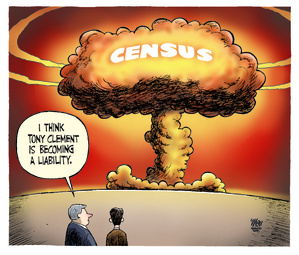
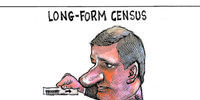
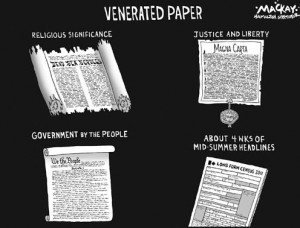
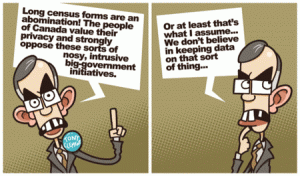
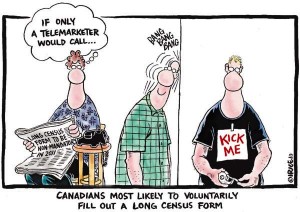
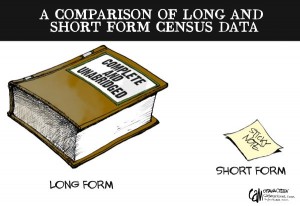
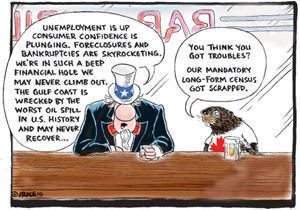
Comments on Posts